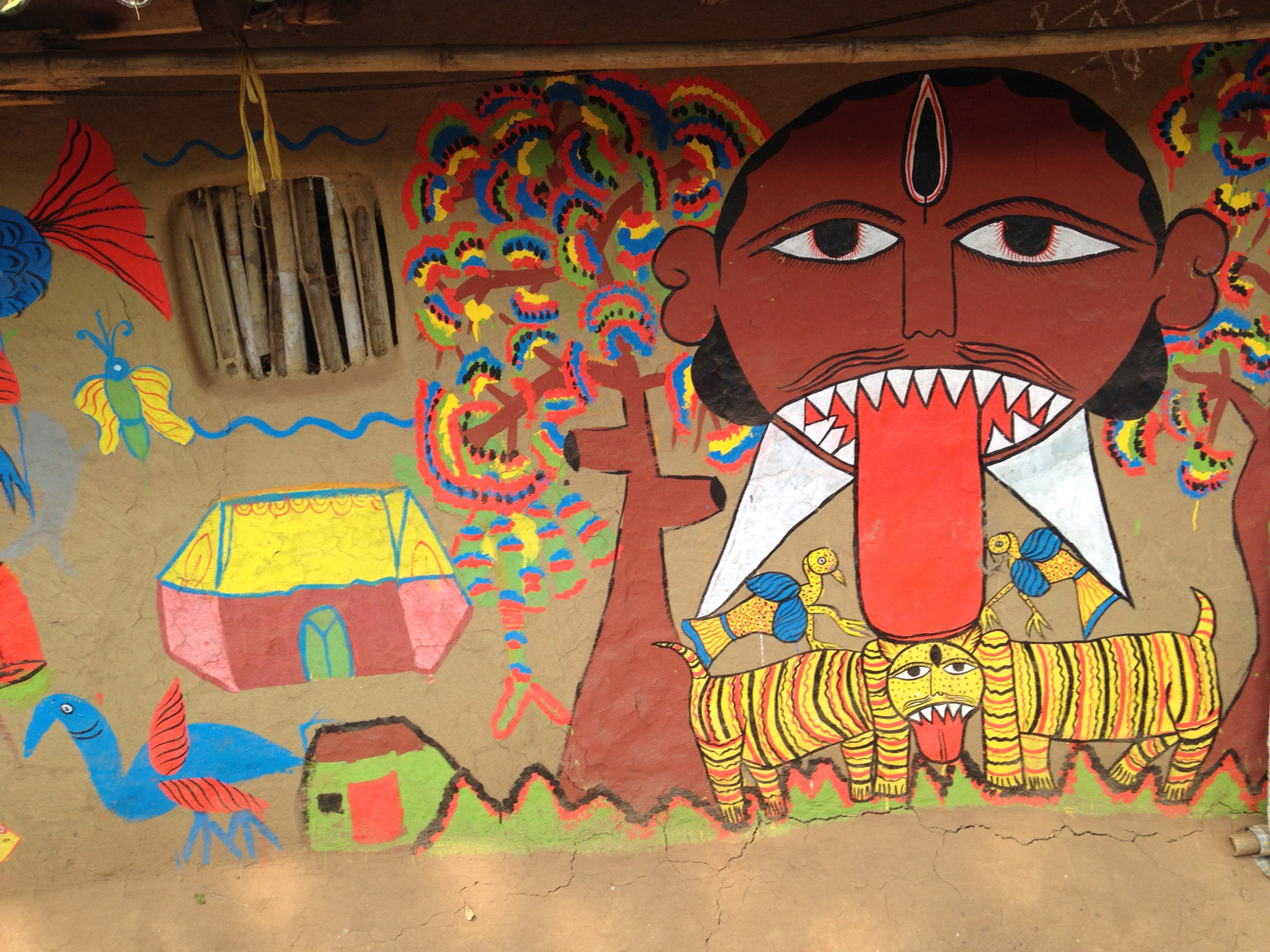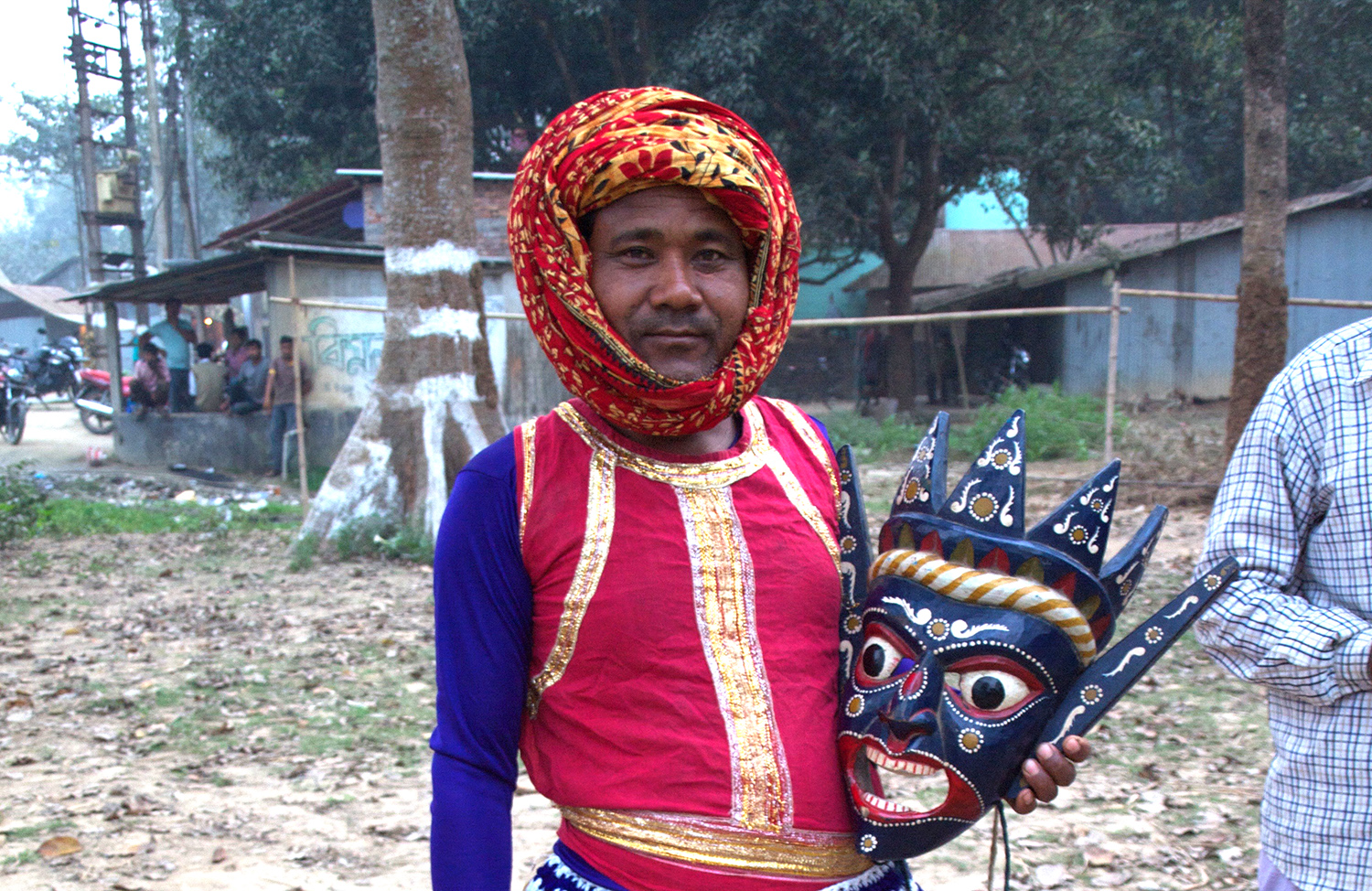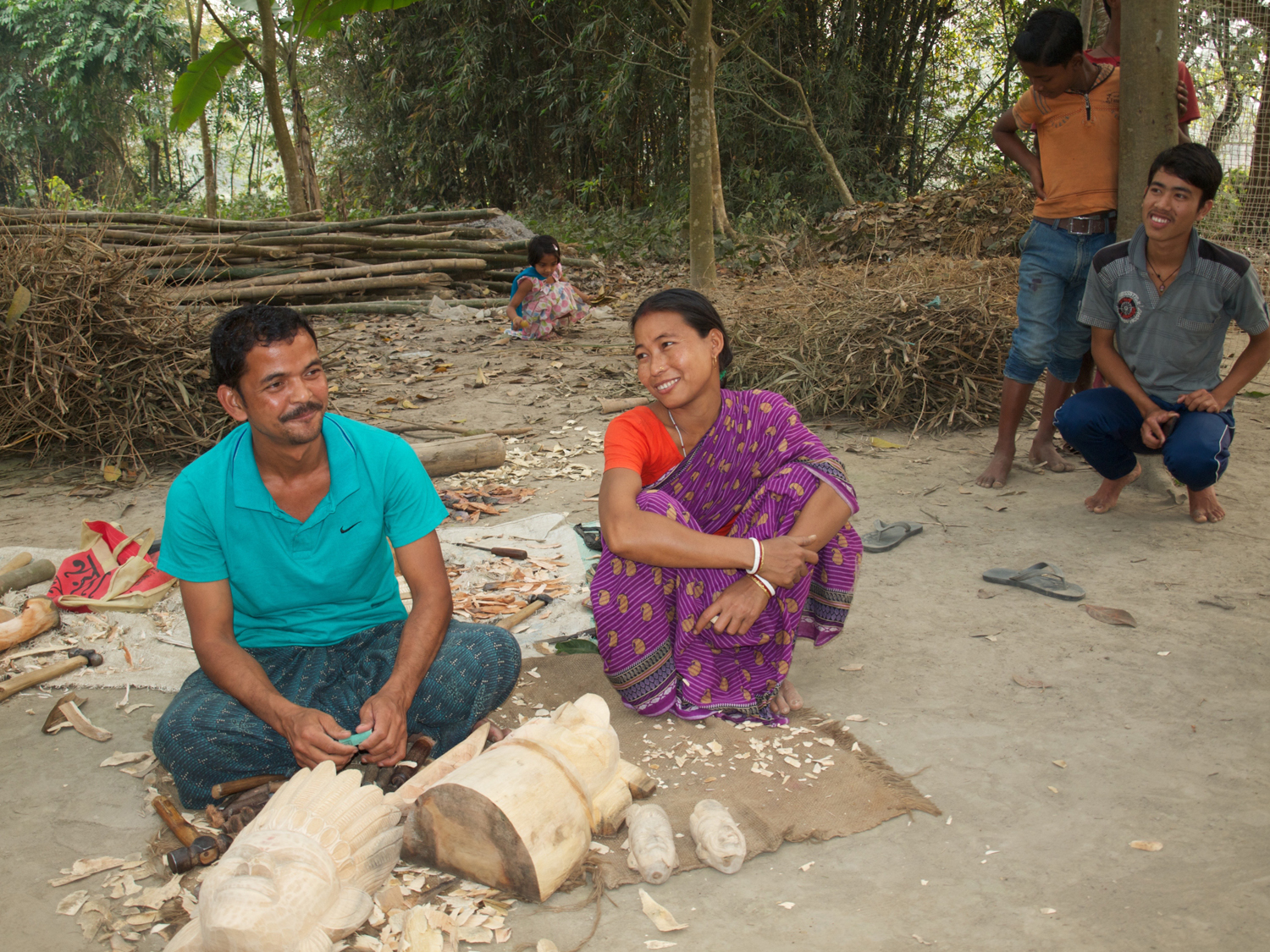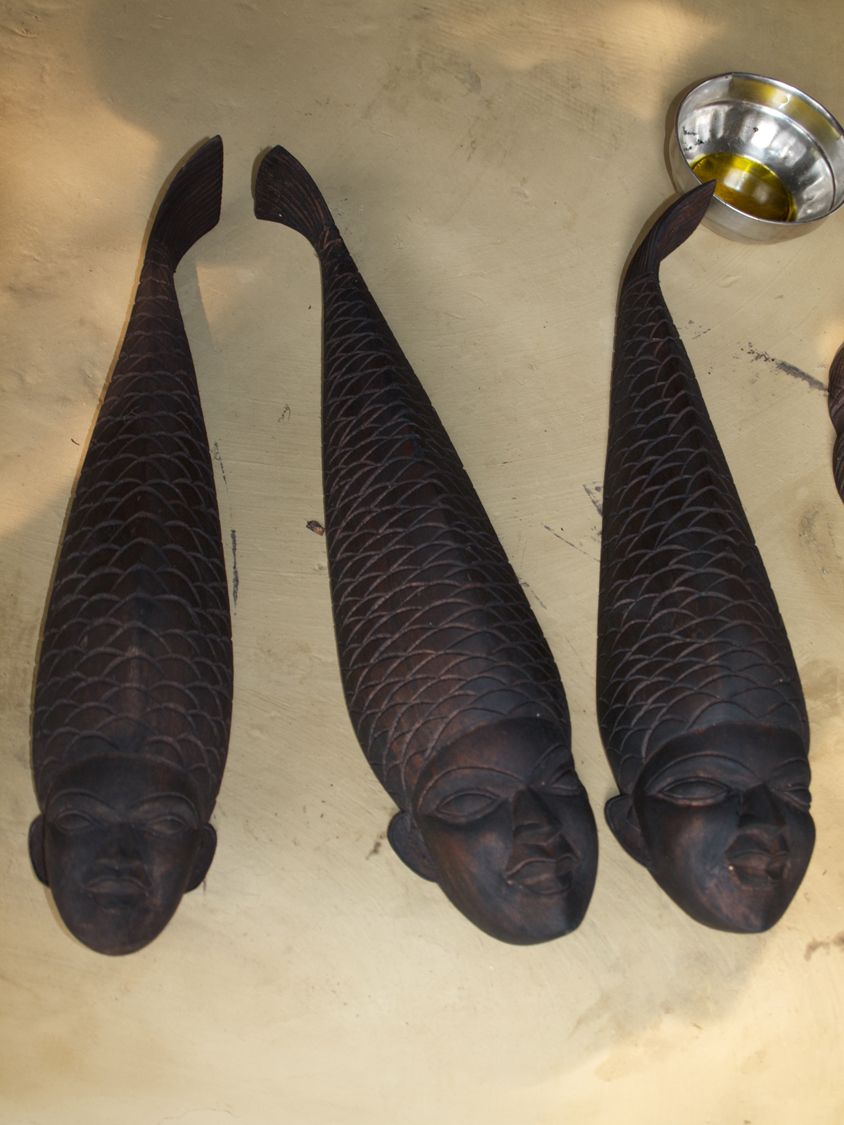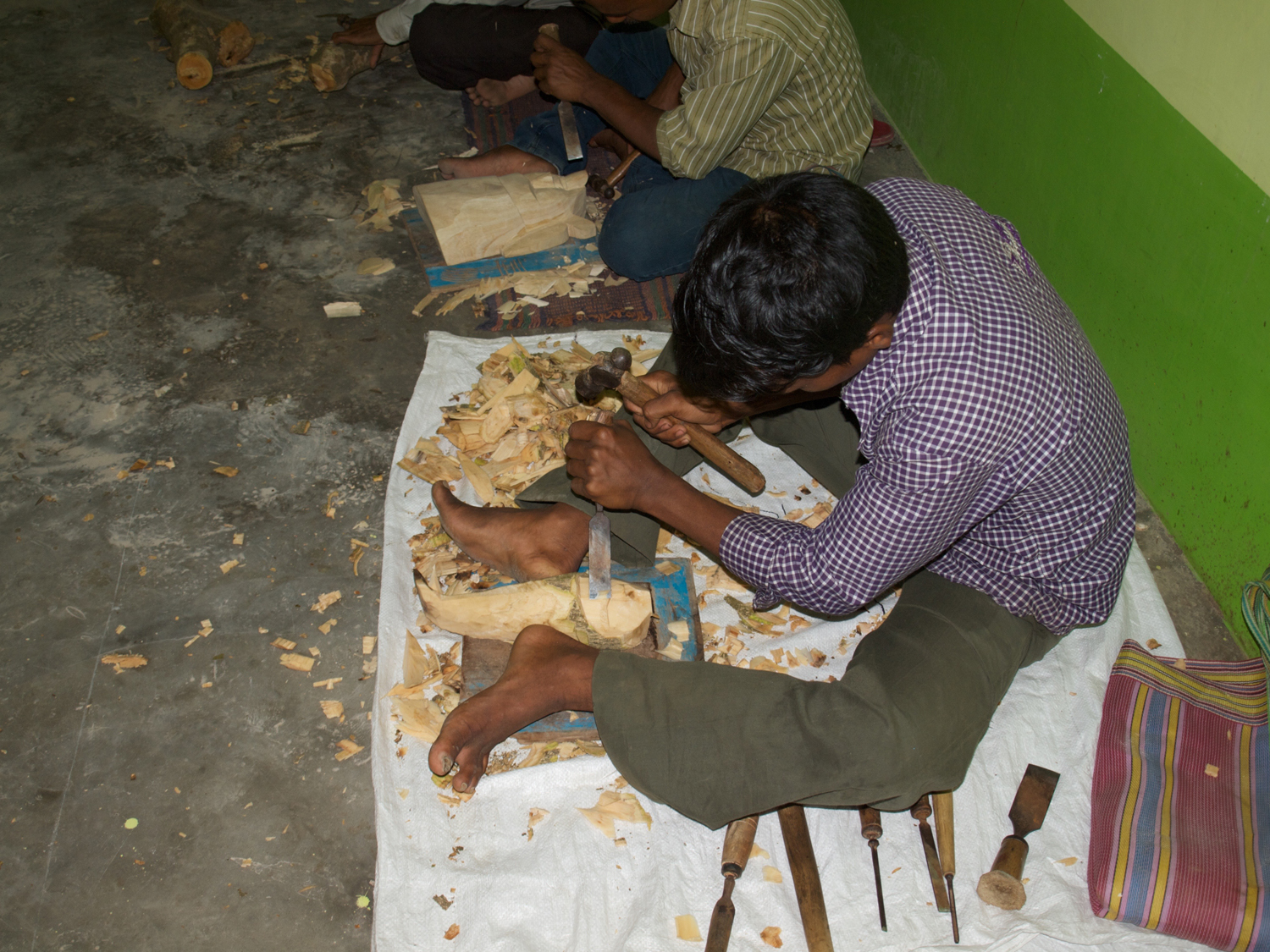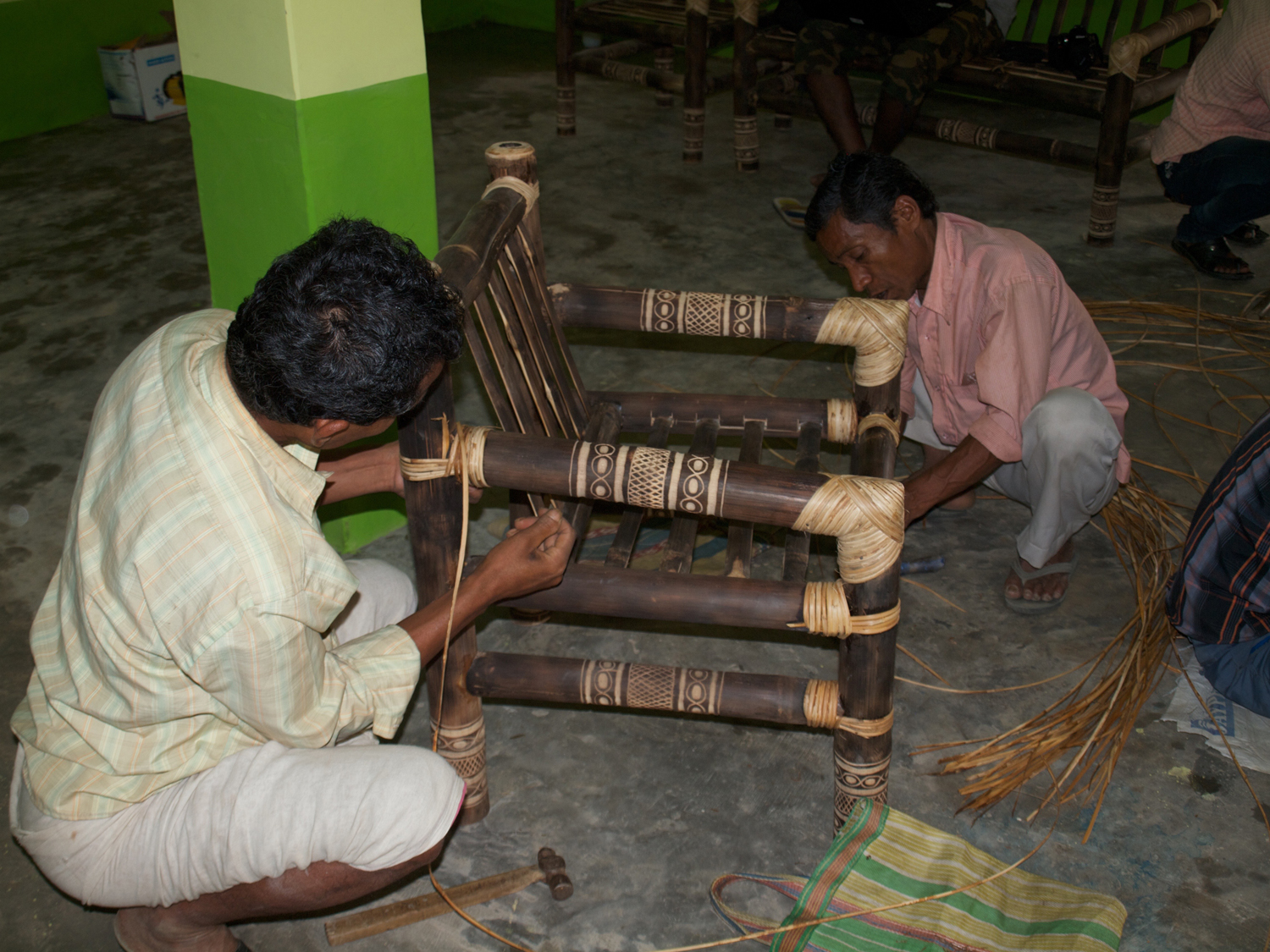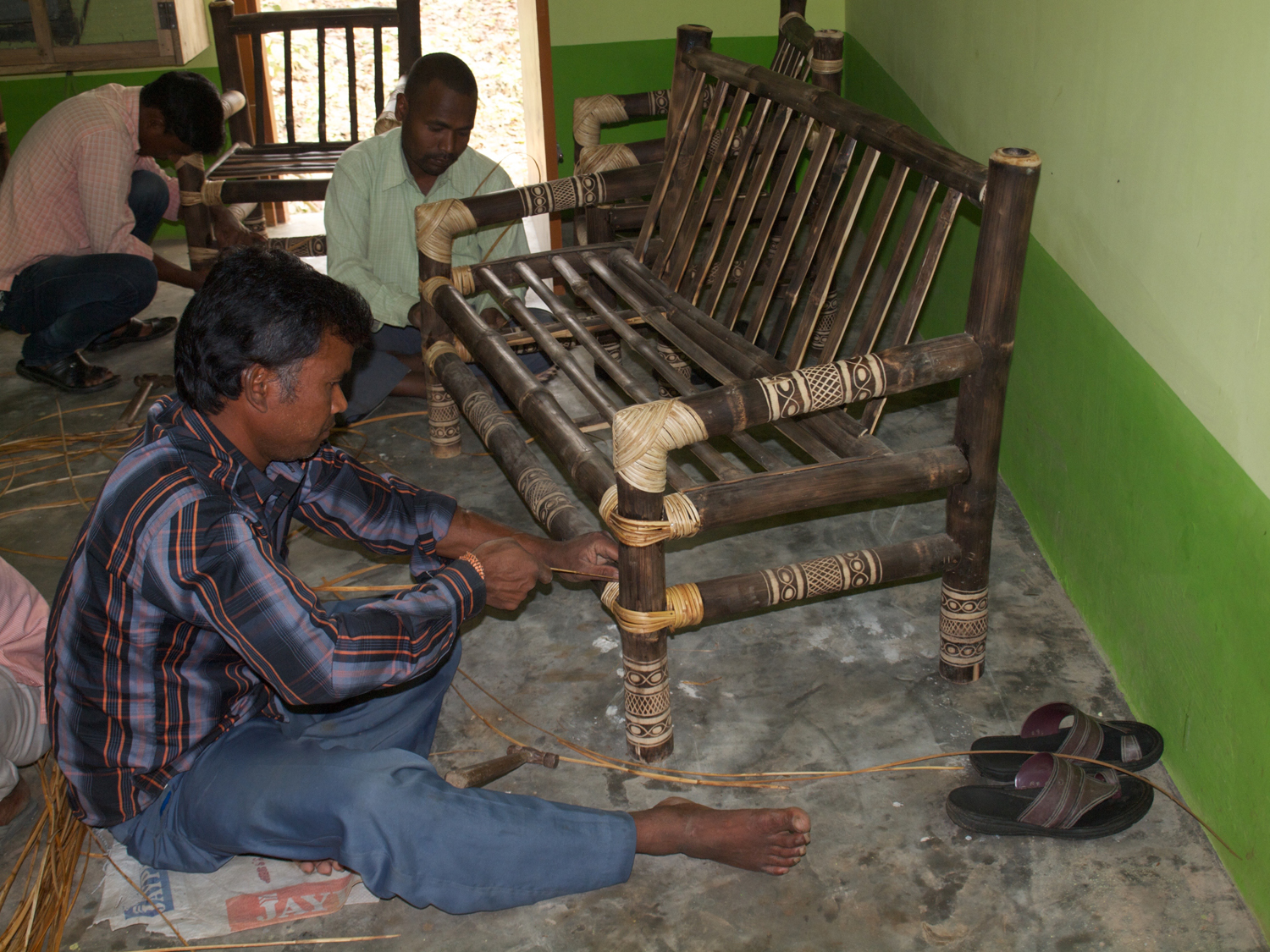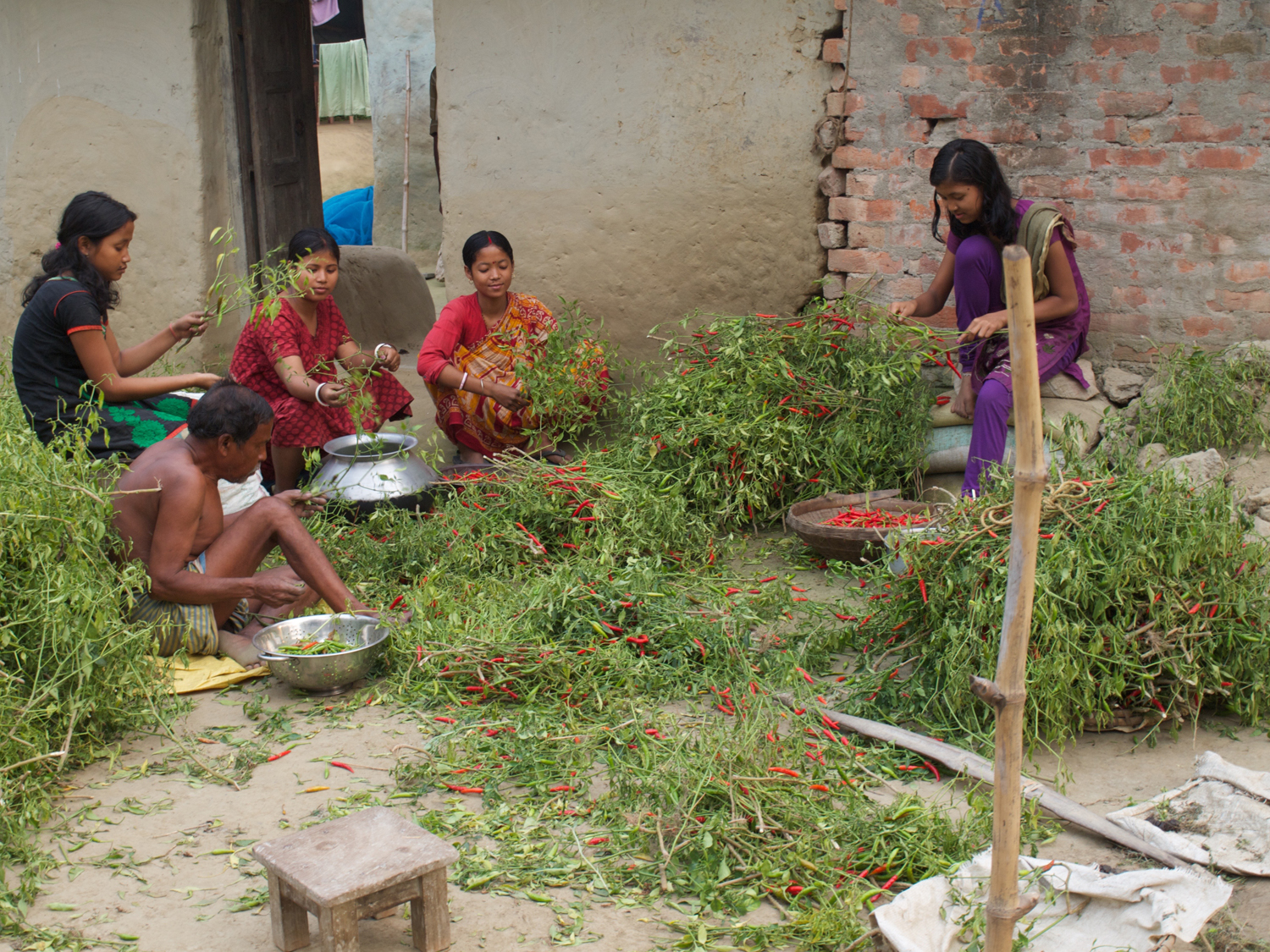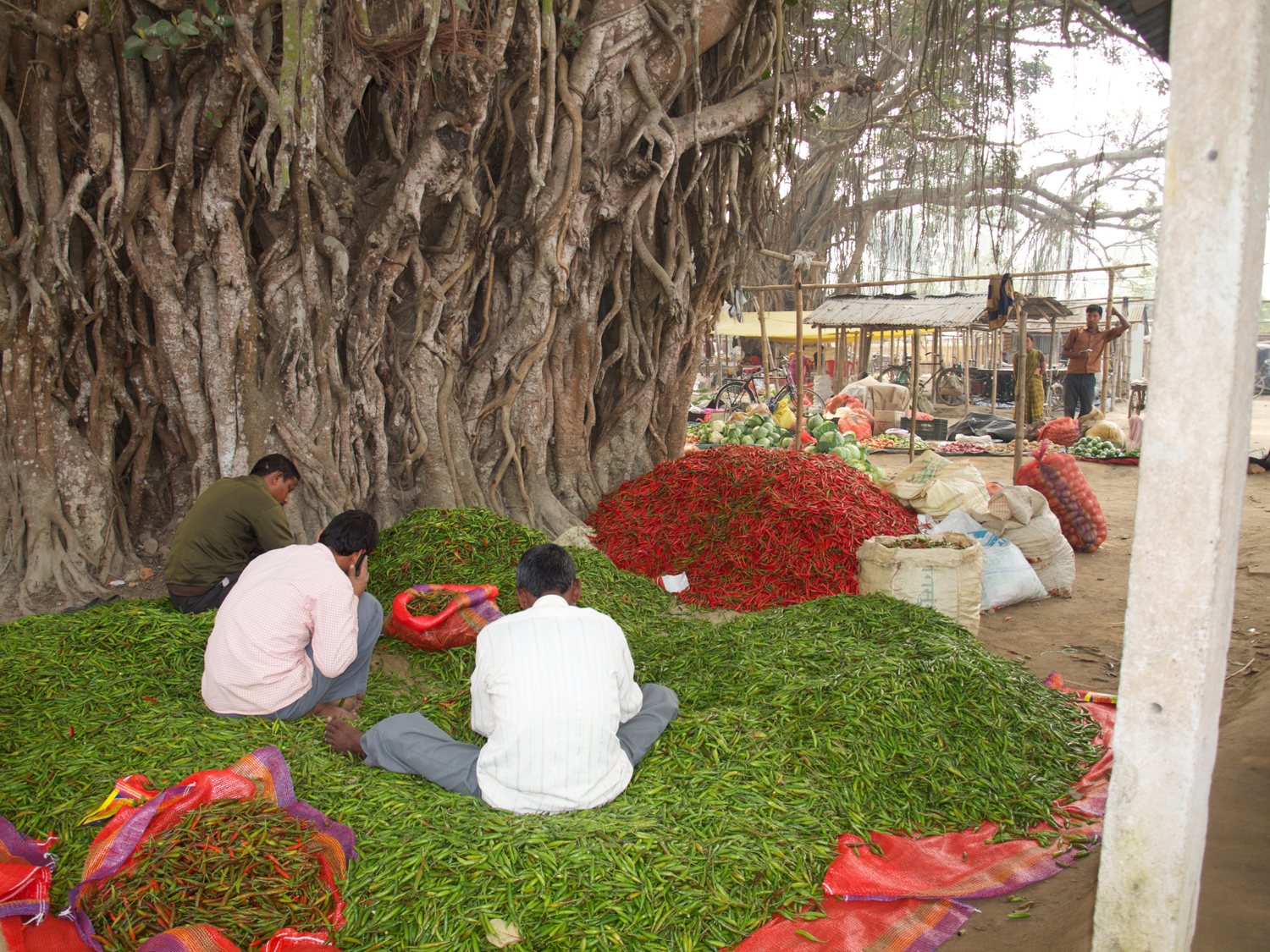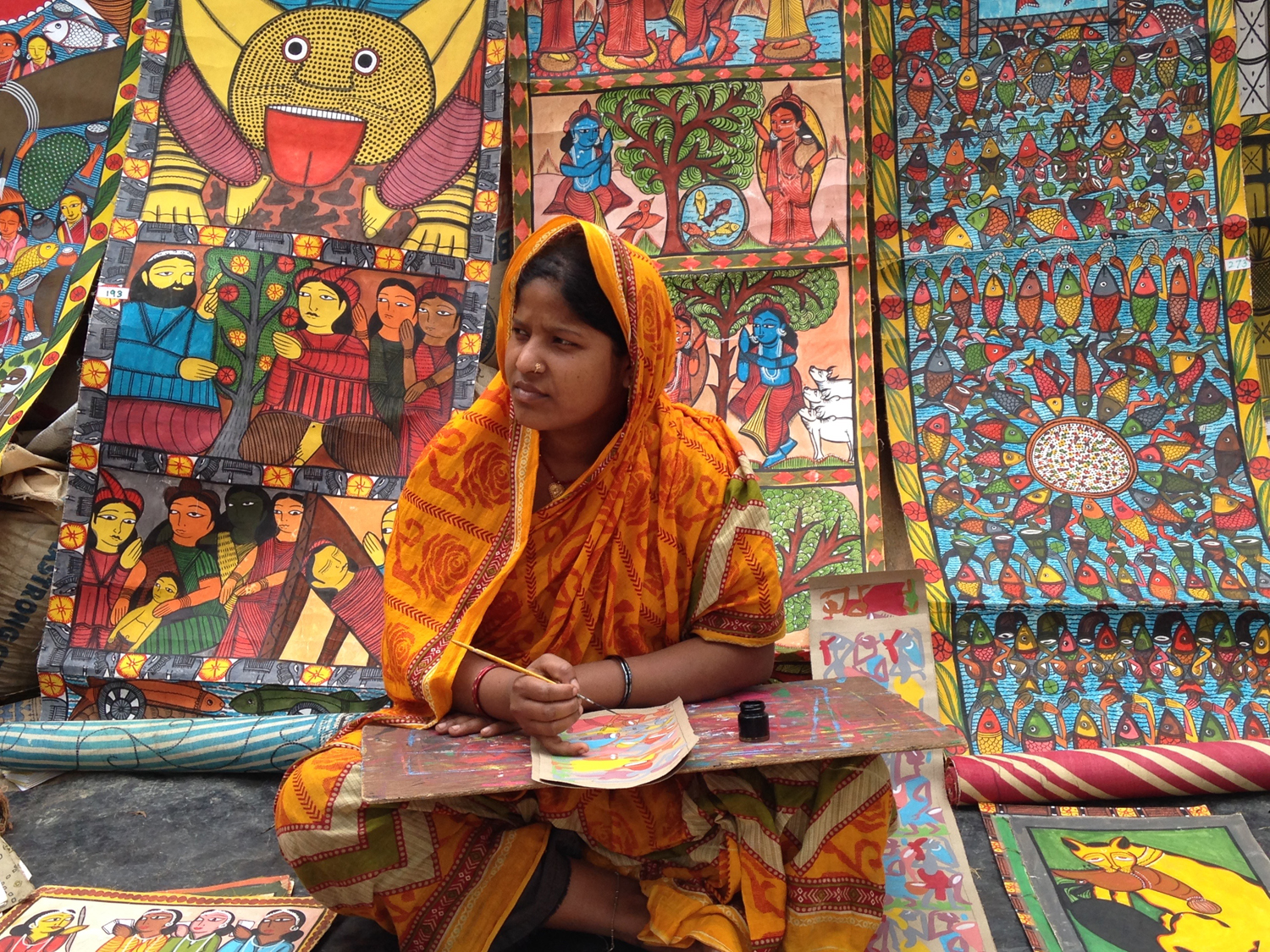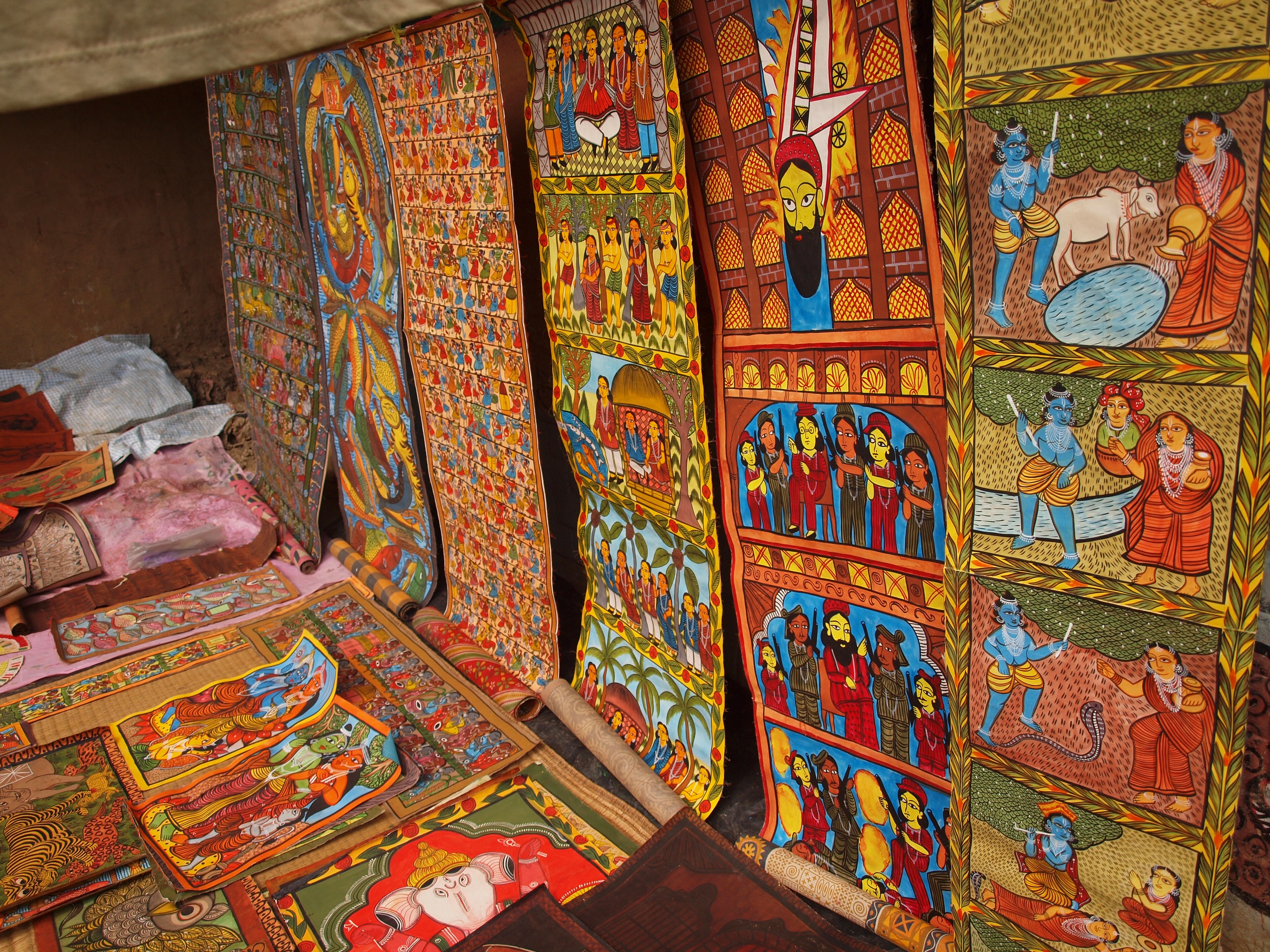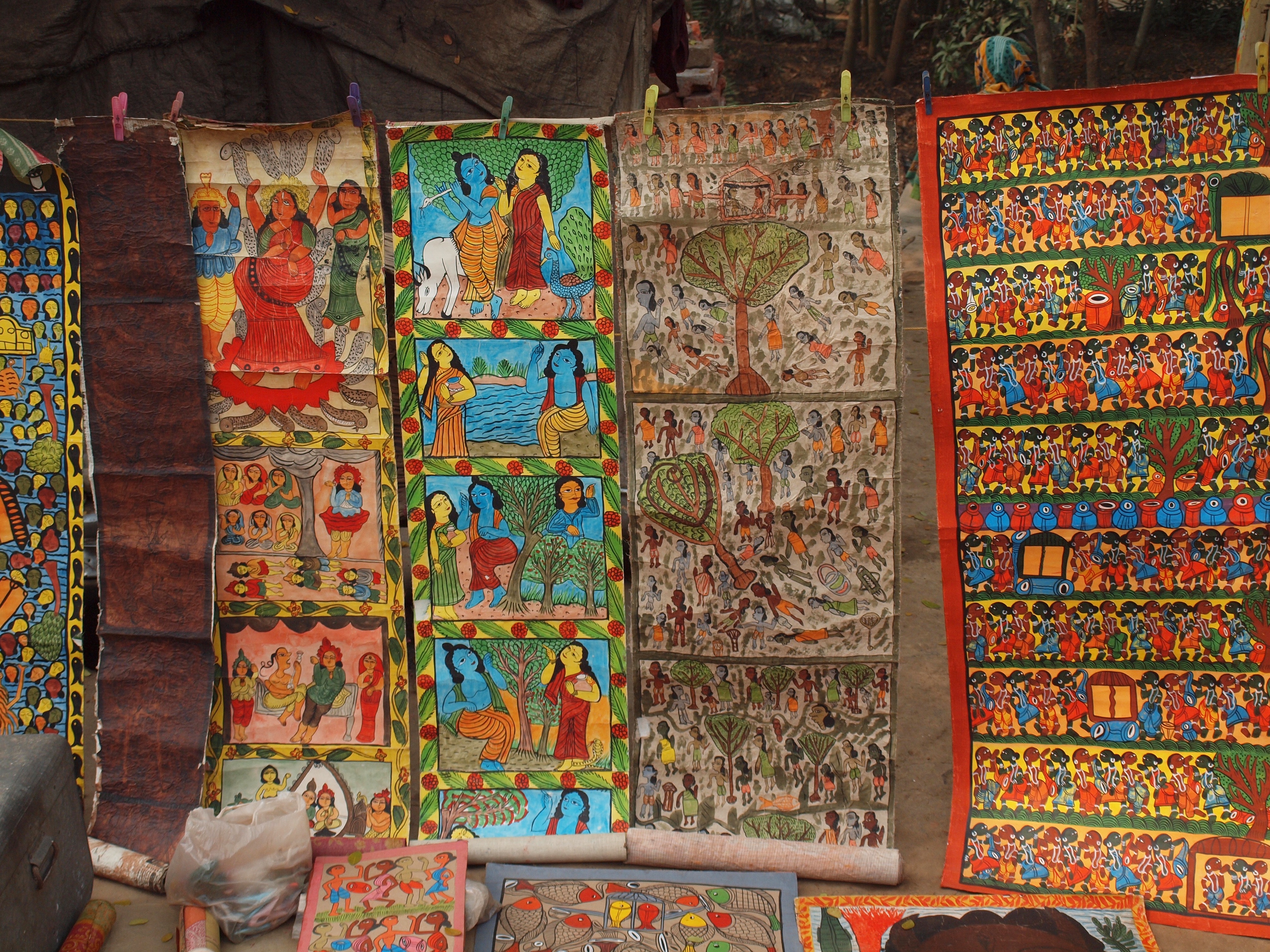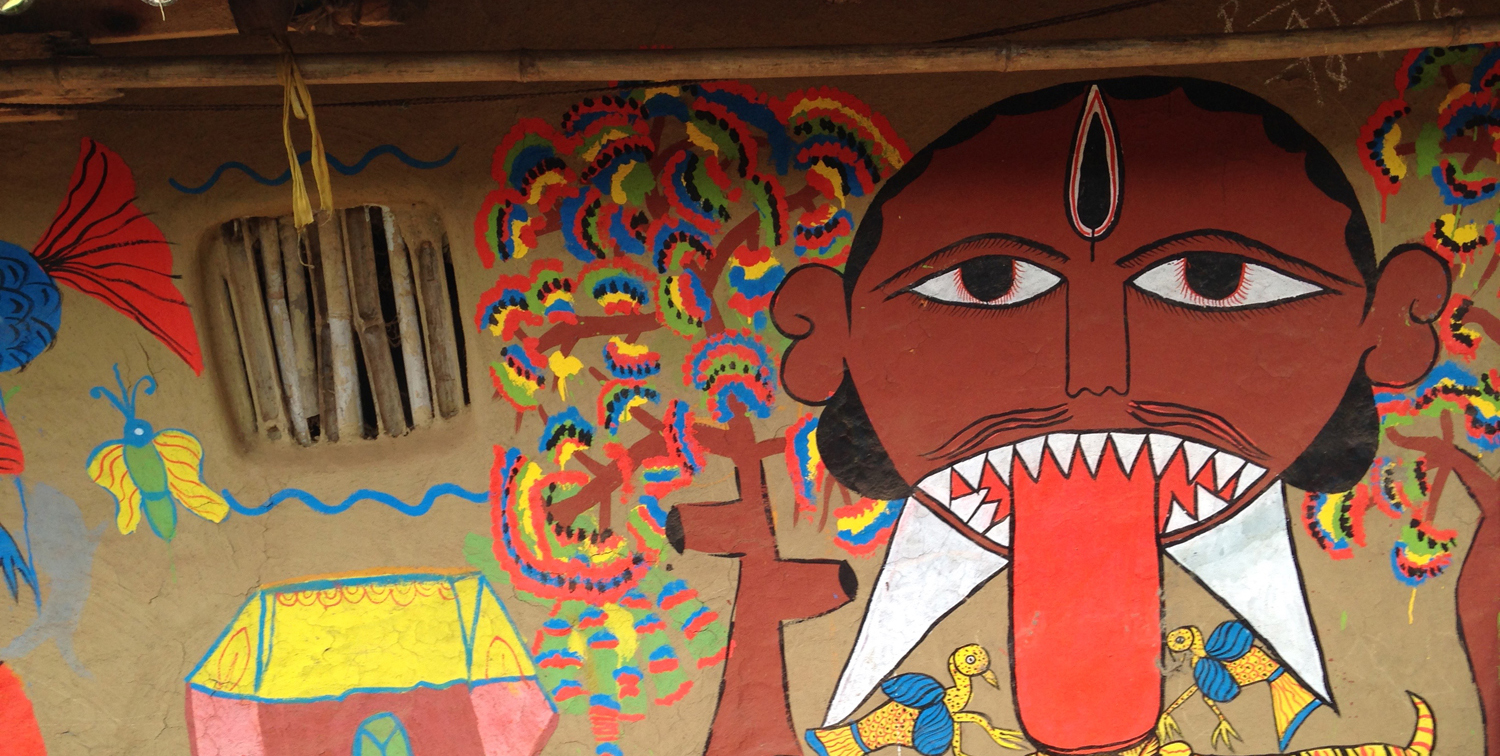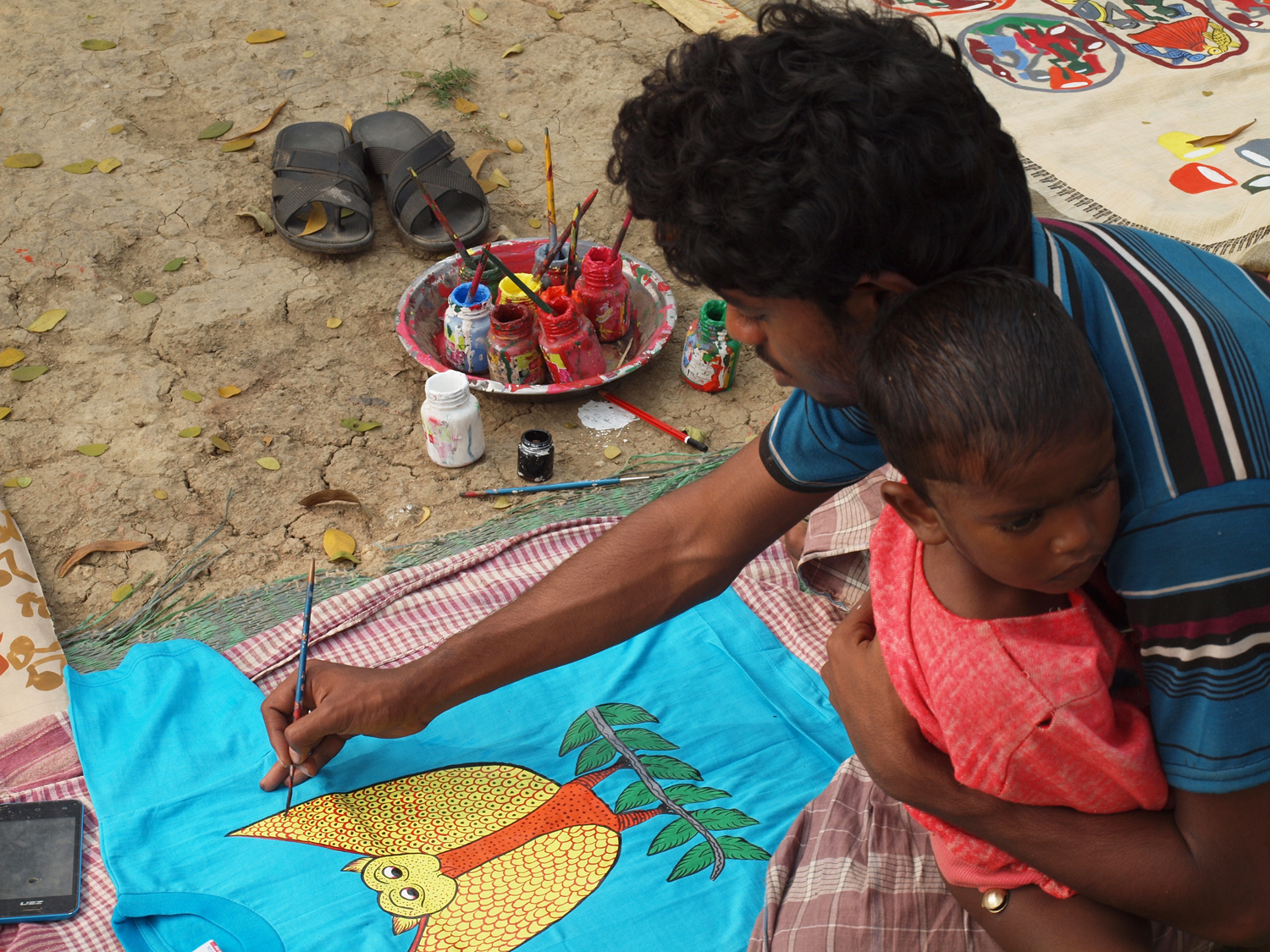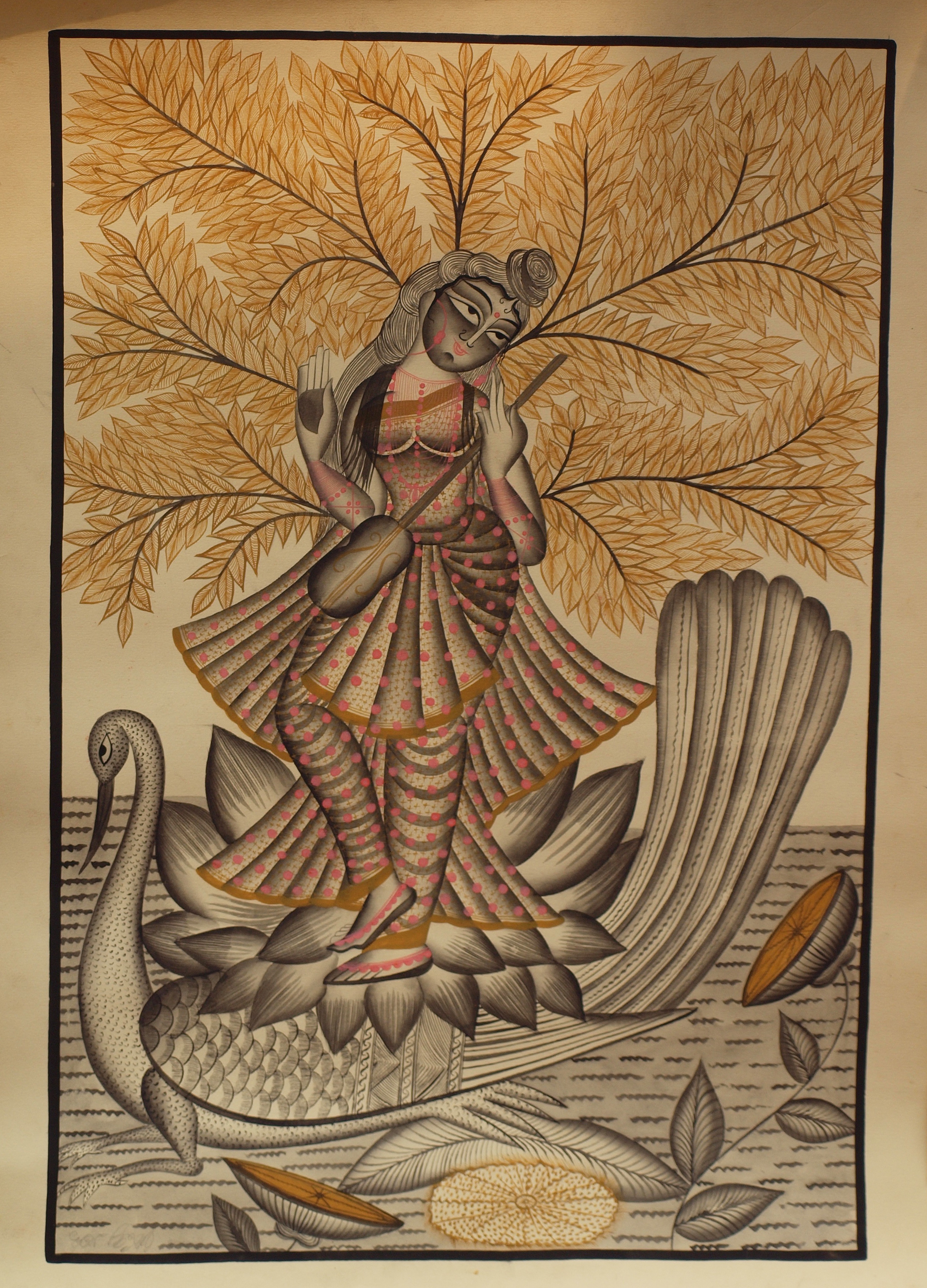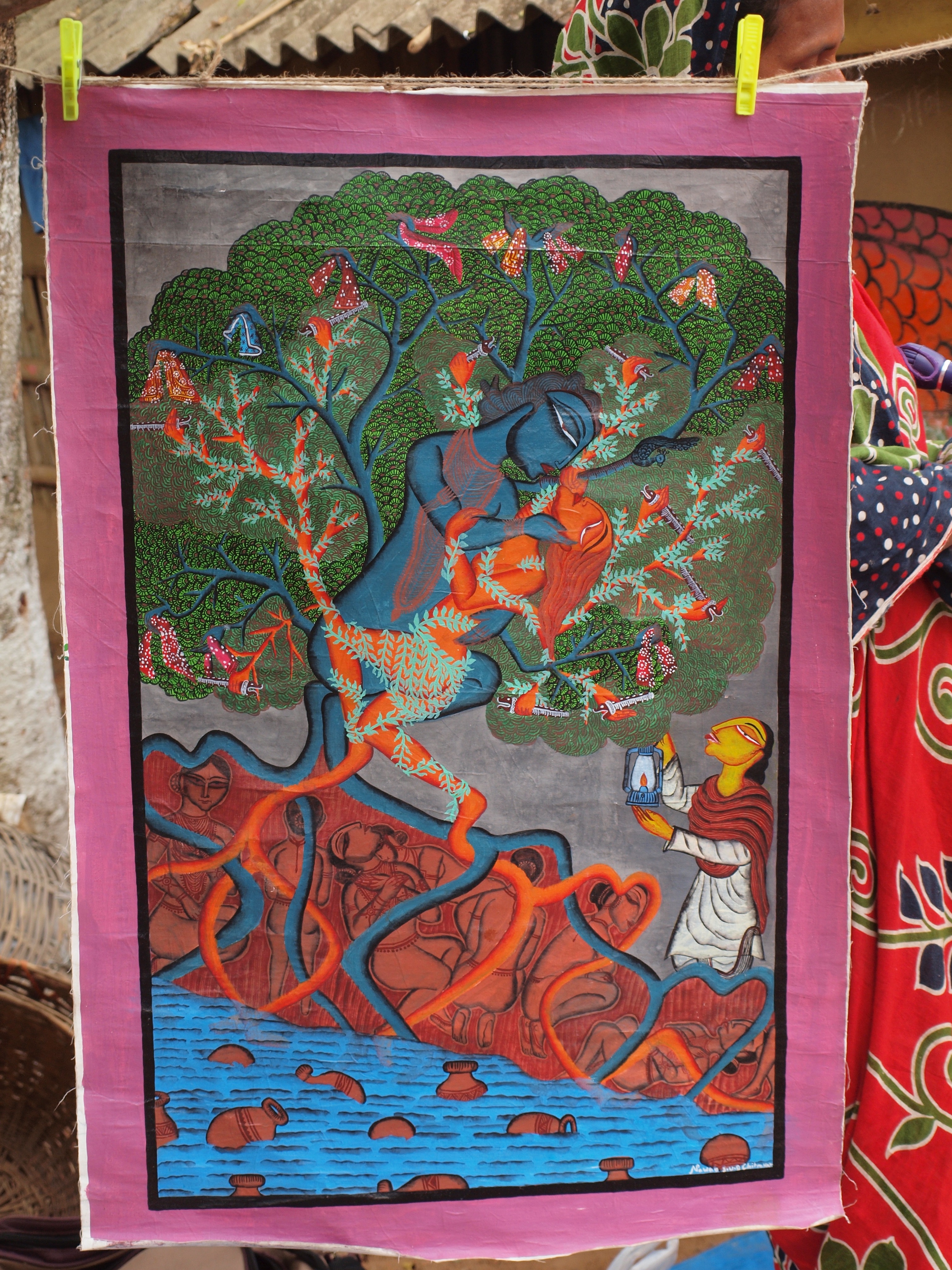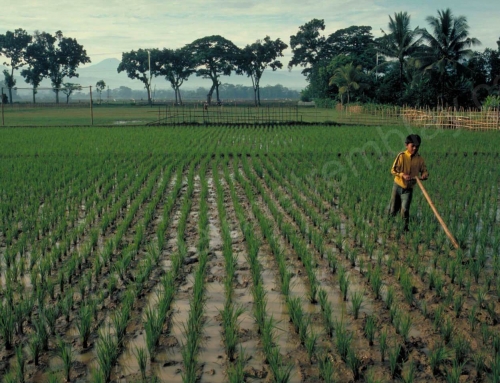Page à traduire
In February 2016, an international team of experts was invited to evaluate a project in 10 artisan villages of West Bengal. How had the support received affected their life and their art? What had to be done during the next phase?
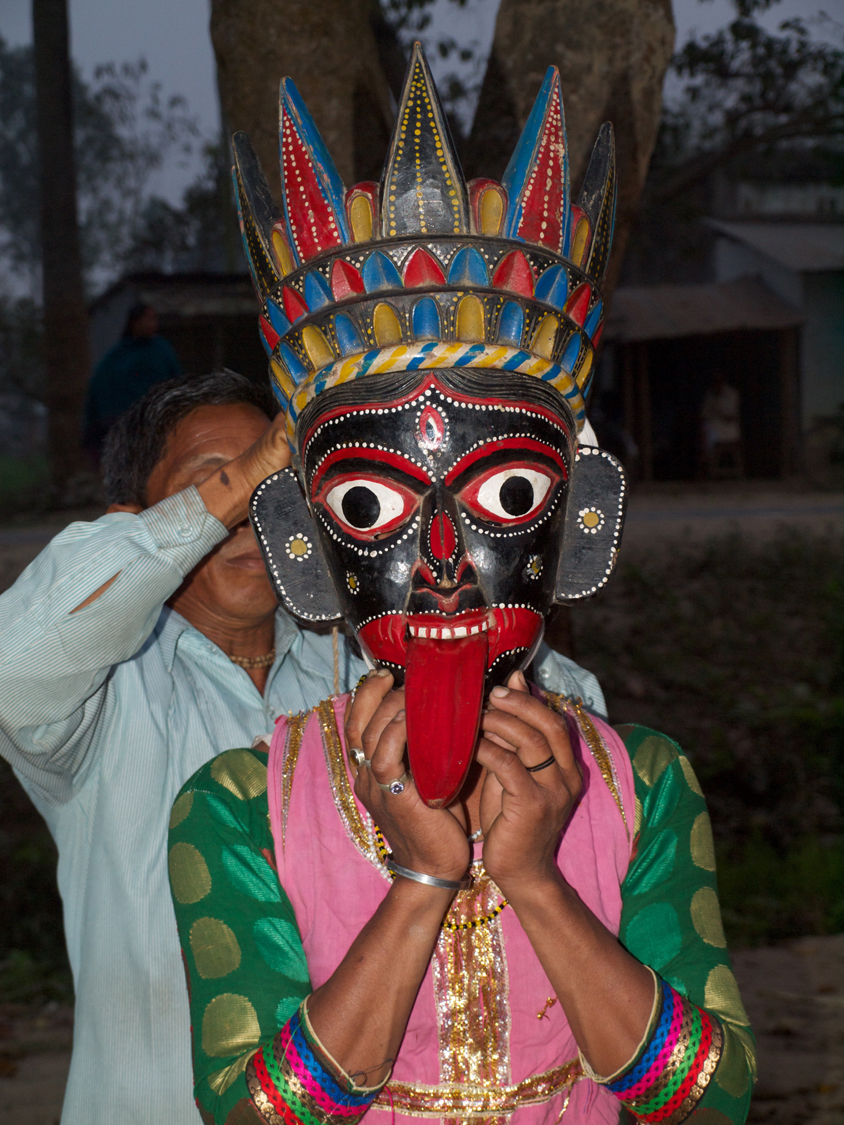
The Department of Micro, Small and Medium Enterprise, Government of West Bengal is partnering with UNESCO to establish 10 Rural Craft Hubs in the state. 3000 crafts persons are covered by the project. The project aims at developing strengthening creative entrepreneurship at grass roots, helping the rural artists to reach out to the global market, strengthening livelihood of handicraft artists, and making the craft villages as cultural tourism destinations.
WOODEN MASKS OF KUSHMUNDI
My team visited the wooden masks carvers of Kushmandi
Upon our arrival, all wood carvers, were eager to mention the recognition they have received. Not any recognition but the recognition from their neighbours and community. What were they doing all this time carving wood on their veranda? Now after 15 and 25 years, their community realized, it was art.
People came to the village to see their work, they were going to fairs and bringing in income. Suddenly they became a little more important to every one. Recognition for an artist, is as necessary as breathing fresh air. Artist create for their art to be seen.The wood carvers can now be proud of who they are and the work they do.Their body language quickly confirmed us that they had been empowered and dignified.
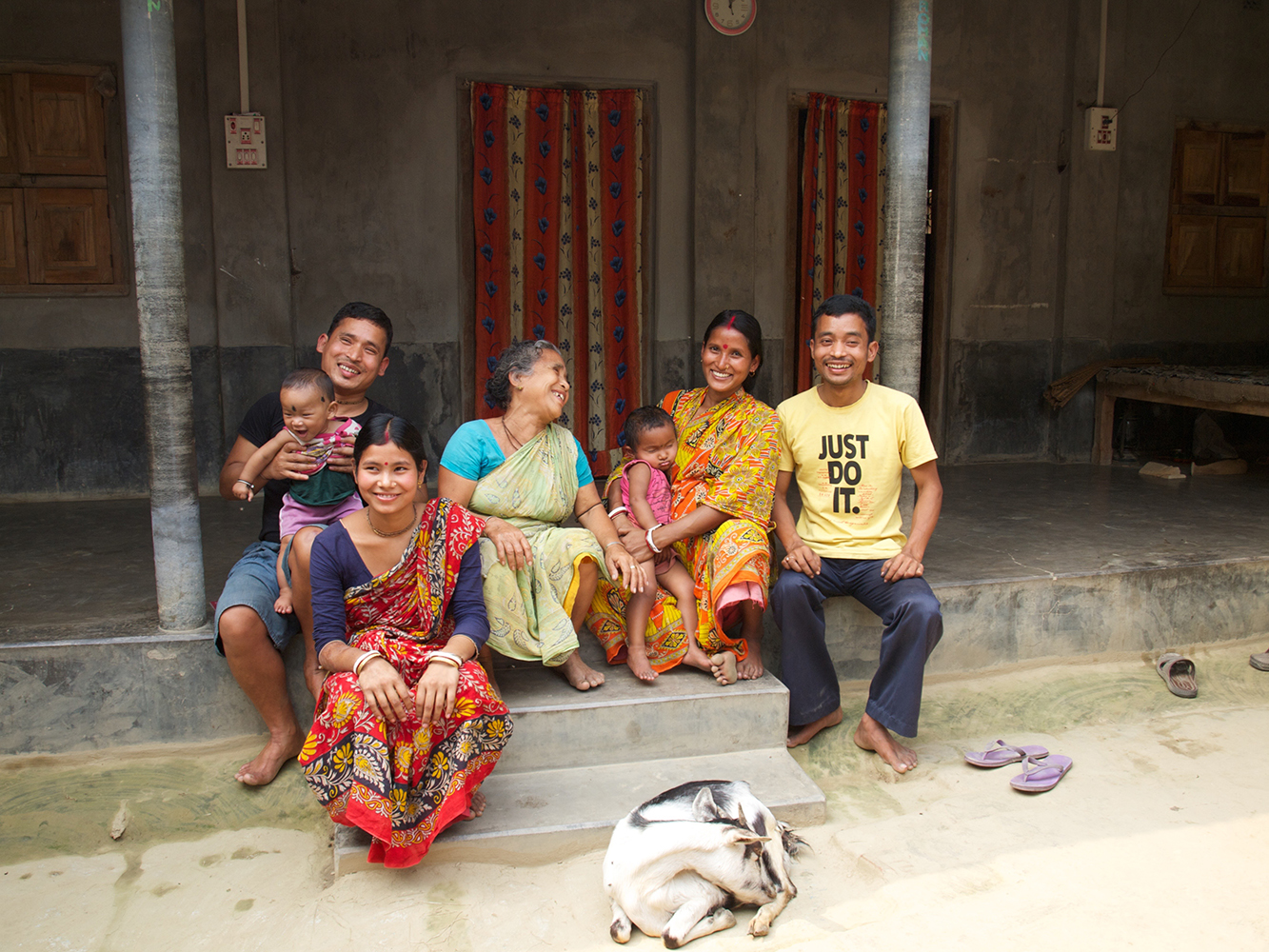
They spoke warmly, heartedly and with gratitude of the learning they are receiving from the workshops. These are most important to them. They had discovered, they had learned, they had travelled within India and one had received a price from Unesco and travelled to Paris. We are travellers all of us and we know, what eye opening this is, to one person.
A clean village, (we saw garbage and wondered about their capacity of getting rid of garbage and keep the village clean). In a beautiful courtyard and a welcoming family, the first artists we encountered were the sons of the Guru Sankar Sarkar, Tulu and Nandi.
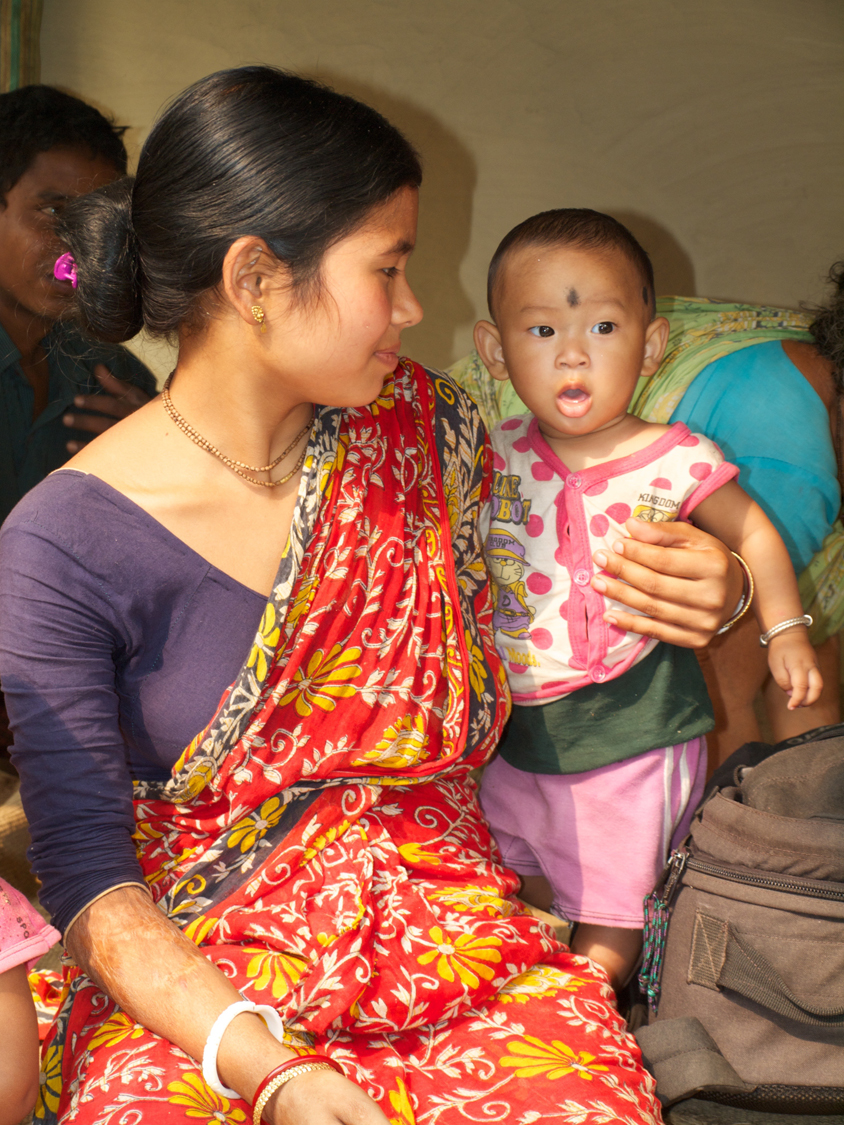
Here in our hub the women do not carve but we interviewed the wives of the wood workers. Asking them what had change in their life since the beginning of the project.
“We have better food” answered Nandi’s wife, but most importantly she added: “What I like most, is that every one is happy now.” Laughing easily. she spoke with ease at the camera and also looked empowered.
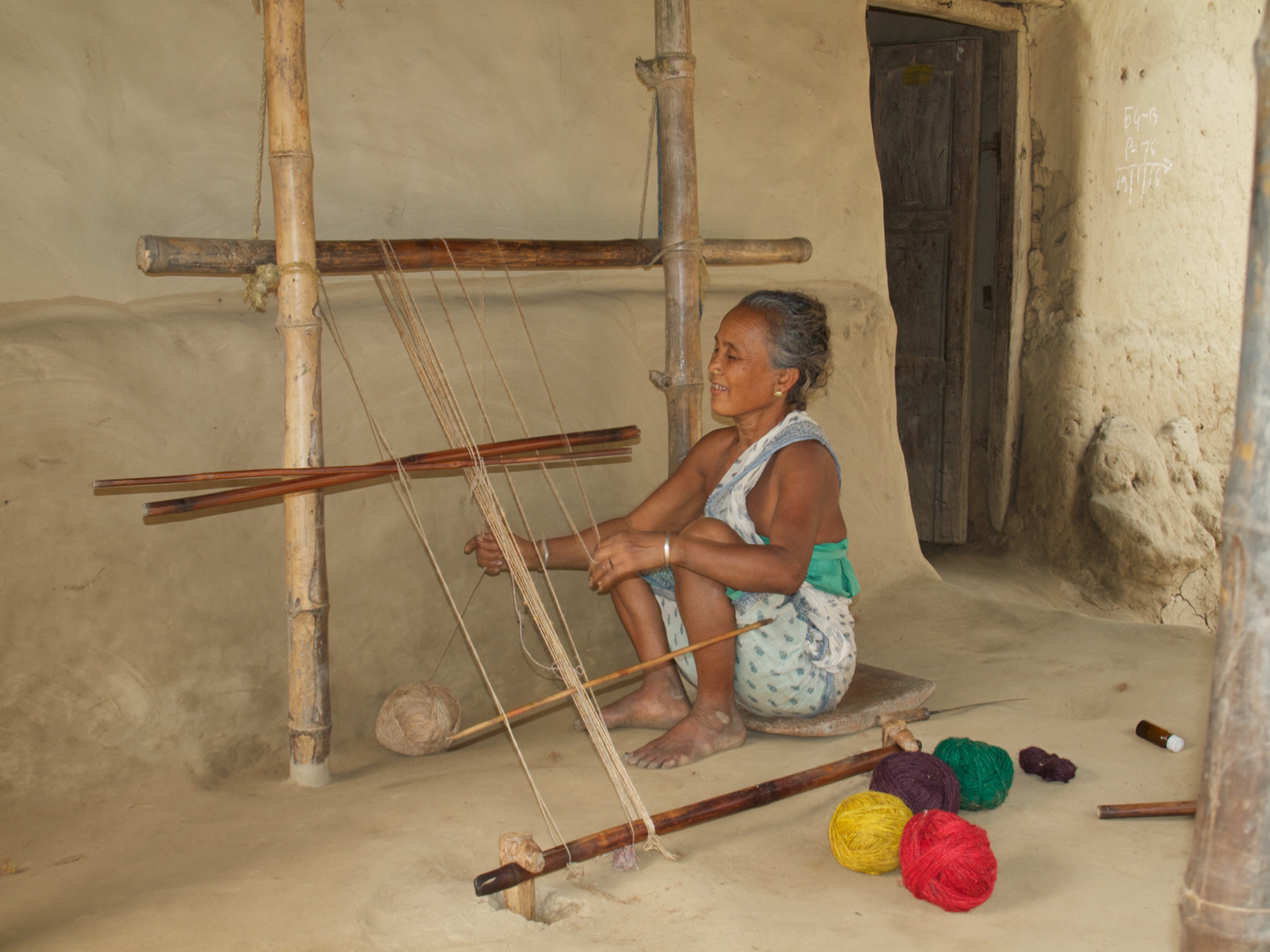
To maximize the benefits the department has also engaged West Bengal Khadi and Village Industries Board (WBKVIB) to provide necessary hardware interventions including common facility centres and equipments to the artists’ cluster. The project interventions have targeted capacity building, skill development, documentation, market linkage and promotion.
The two others wood carver we met, who are not the sons of someone, and had received less recognition from outside the community. They still difficulties. One was the only earner for 7 people.
There the woman had more difficulty speaking at the camera. They did not seem to able to tell how their life had improve without a little help from their husband.
-“Better clothing”, one manage to say.
-“He goes off here and there and I stay in the village” said the other.
In one of my village visits since I have arrived in West Bengal someone asked me: “Tell me how can we improve our lives?”
To improve your life, your family life and lifestyle, you need to know how and women need to be part of it. Women need to attend workshops on the subject of “life improvement” on how to make their environment more beautiful, more practical, more time saving. They need exemples, they need to see.
I am a great promoter of beauty and there is a question we can ask ourselves: “Can beauty change the world?” It certainly can bring happiness to our lives.
When we met Sankardas we found a real artist when entering the courtyard. He confirmed that now with his income, the essential of the family were assured. That this took away stress between the couple and a better relationship. His wife also spoke easily at the camera.
It seemed that security brought quiet of mind and confidence to the woman and the entire family.
These wood carvers had double, nearly tripled their income. (From 10,000 to 25,000 roupies a month) (From selling 10,000 roupies to 50,000 roupies in one fair)
Sankardas is a guru in his art but wants his son to study as well as carry on the legacy. The first appreciation is without any doubt the fact that they can send their children to school and to better schools. One of the young daughter of our artist said she”I want to be a doctor.” We can only hope this project will last long enough for the entire family to continue independently and make her dream possible. The artist are the first one who risk with this project. They risk their dreams and their art.

Young people
There is a wonderful story within these encounters. The wood mask carvers we met had seen Sankar Sarkar’s work when they were teenagers and when seeing it had thought: “I want to learn this” and he had become their teacher, their guru. Today they are the teachers and who comes to them to be their guru’s. Your people, teenagers.
You know the family is Women, men, children ad young people. Young people are the most forgotten people in the world. The wood carving artist have little time now, there are more and more fares, the request for products is getting higher. Special attention needs to be brought to teenagers.
Young people might not be able to carve dancing mask as they begin and maybe not every one of them will want to be the next guru of the tradition. However, they might bring creativity, be inspired with subjects that will touch a younger generation.
If behaviour change is desire as well as a better lifestyle, we know this cannot be achieve without the participation of women, teenagers and young people. Family harmony is when both parent’s are empowered.
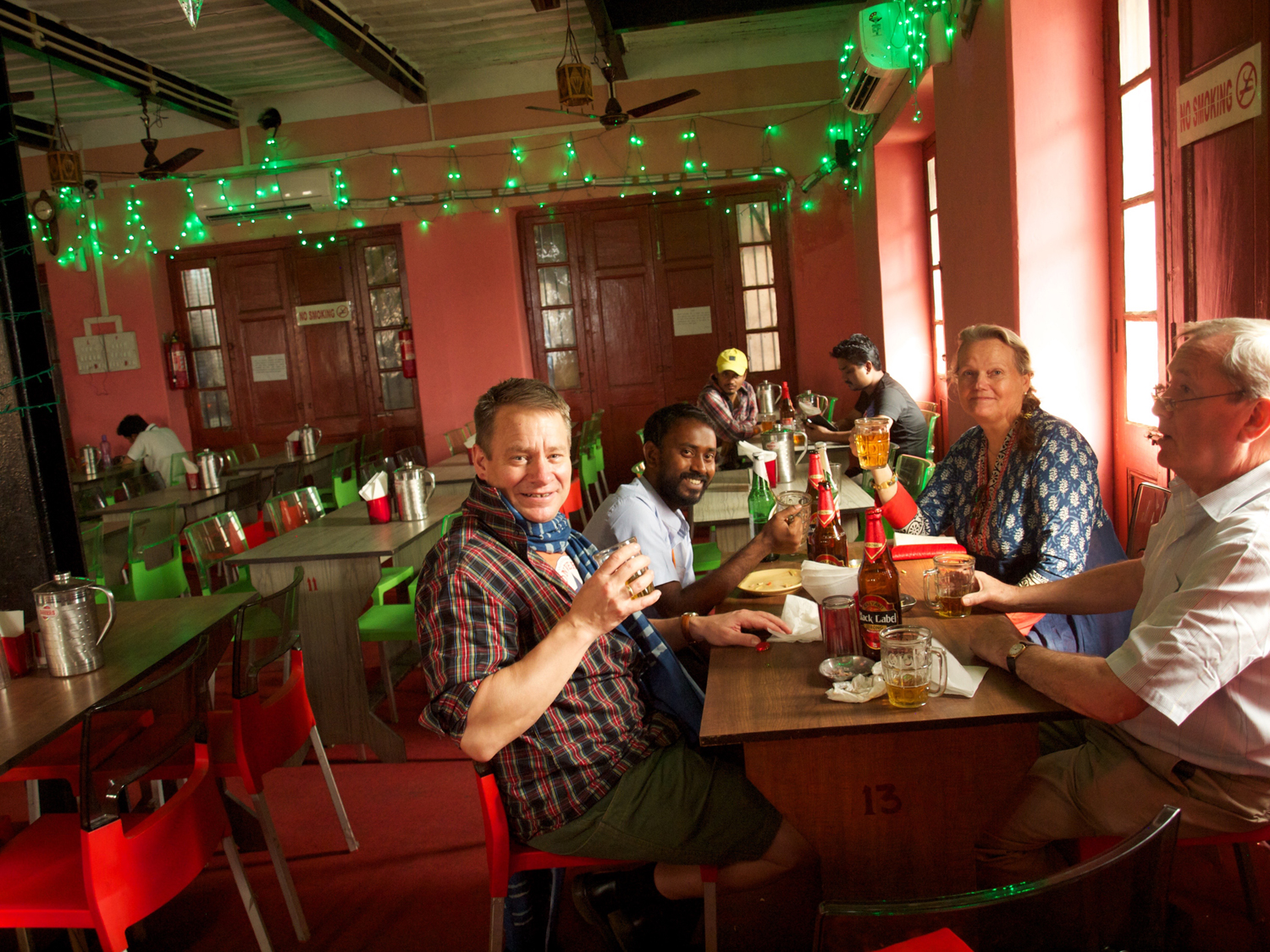
PINGLA AND THE ART OF PATTACHITRA
Pingla, the village of the Patuas , a muslim tribal community in West Midnapore, West Bengal, stands out as a success story. The socio-economic empowerment of the folk artists has brought them on the road from marginalization and poverty to assuring their daily life through their art.
They are the heritage artists of Patachitra – scroll painting. The paintings are traditionally done on long scrolls of cloth and may be viewed as an early precursor to modern day story boards.
They accompany their painting by songs which narrate stories from history and mythology.
They use natural colors which they extract from local flowers and leaves.
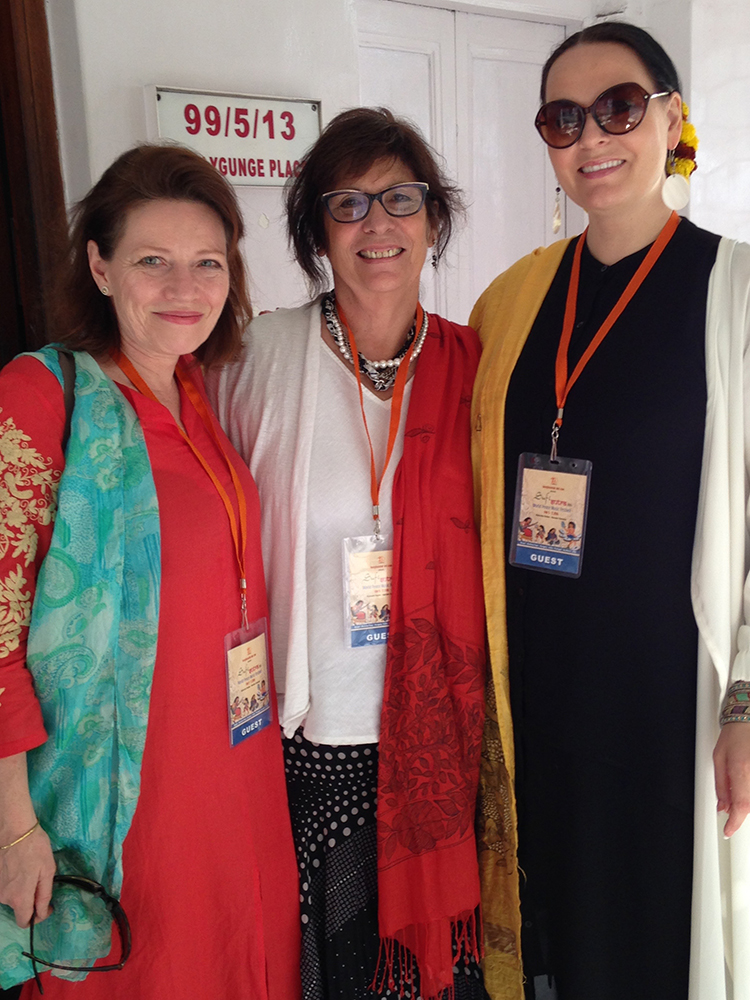
From the Netherlands, Sonja Heimann and Stan Rijvan (missing from picture) Helene Tremblay from Canada and Hill-Aina Steffenach from Norway, were invited early February 2016, by Benglanatak dot com to attend the World Peace Music Festival in Kolkata. The team had the opportunity to visit the artisans of Pingla and appreciate an incredible village of artists and artisans.
Natungram
As part of the project of presenting Humanity to Humanity, Helene Tremblay lived with a family in the doll making community of Natungram, also part of the Rural Crat Hub
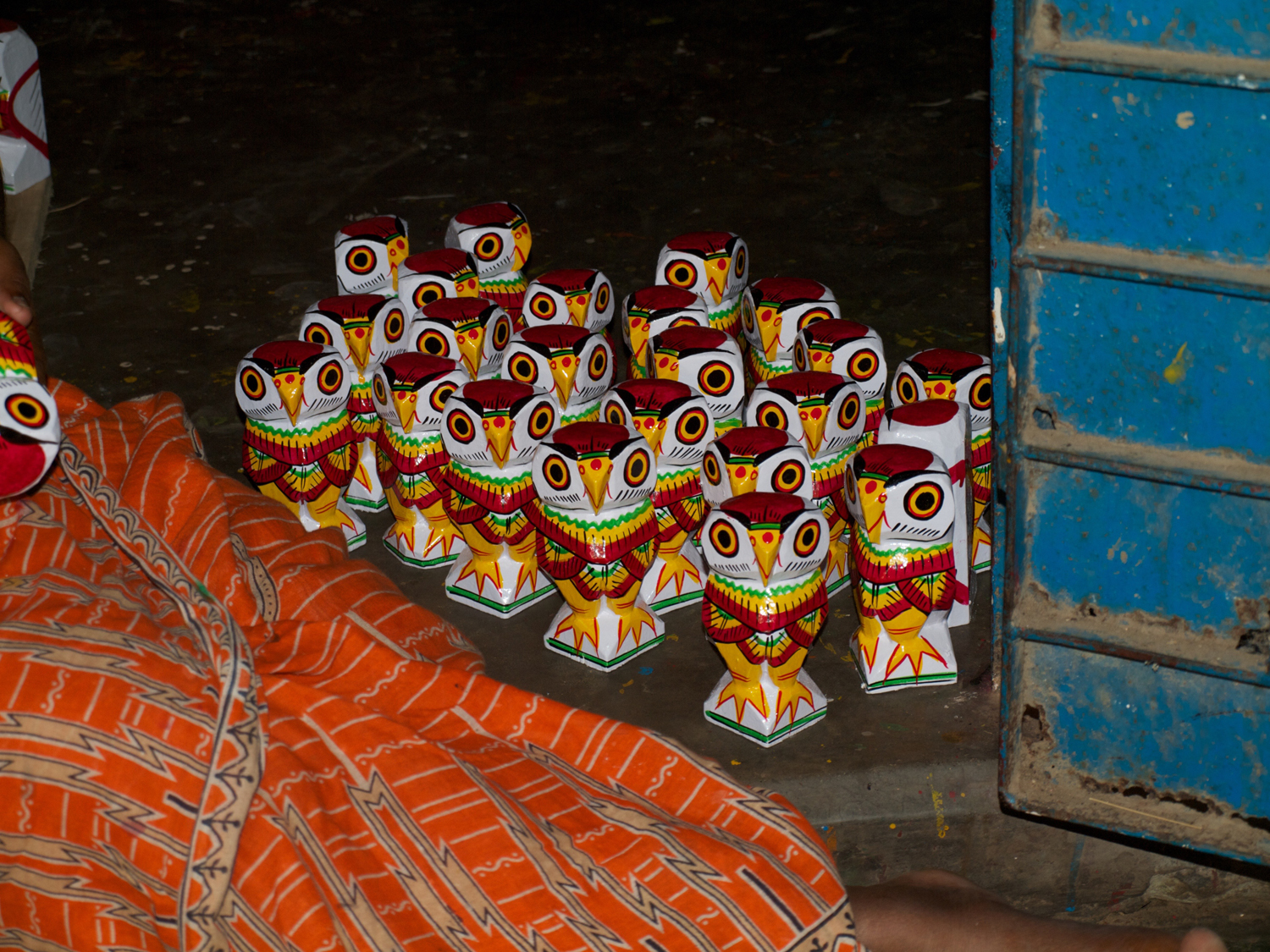
This project aims at developing 10 rural craft hubs and capacity building of the craft communities to develop a self sustainable business process.
Capacity building process includes strengthening technical, business and life skills. National and international market linkages will help them to achieve growth and sustainability of business. Exchange and collaboration will help in developing exposure leading to innovations. Promotion will help the villages to get ‘identity’ and evolve as destinations. Village festivals will create local ‘recognition’, attract outsiders to the place, get new partnerships developed including media and will also benefit the larger communities around the craft villages.
Other than improved socio-economic impact on the direct beneficiaries, this initiative is expected to create an increased awareness of the global audience on these handicraft villages, increased involvement of local youth & women, reduced out-migration, increased participation of locals in development process.
http://www.banglanatak.com

